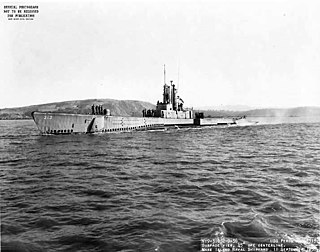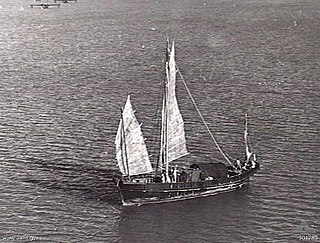Related Research Articles

The United States Navy Sea, Air, and Land (SEAL) Teams, commonly known as Navy SEALs, are the U.S. Navy's primary special operations force and a component of the Naval Special Warfare Command. Among the SEALs' main functions are conducting small-unit special operation missions in maritime, jungle, urban, arctic, mountainous, and desert environments. SEALs are typically ordered to capture or kill high-level targets, or to gather intelligence behind enemy lines. SEAL team personnel are hand selected, highly trained, and possess a high degree of proficiency in direct action (DA), and special reconnaissance (SR), among other tasks like sabotage, demolition, intelligence gathering, and hydro-graphic reconnaissance, training, and advising friendly militaries or other forces.

A commando is a combatant, or operative of an elite light infantry or special operations force, specially trained for carrying out raids and operating in small teams behind enemy lines.

The Special Air Service Regiment, officially abbreviated SASR though commonly known as the SAS, is a special forces unit of the Australian Army. Formed in 1957 as a company, it was modelled on the British SAS with which it shares the motto, "Who Dares Wins". Expanded to a regiment in August 1964, it is based at Campbell Barracks, in Swanbourne, a suburb of Perth, Western Australia, and is a direct command unit of the Special Operations Command.

The United States Naval Special Warfare Command (USNSWC), also known as NAVSPECWARCOM and WARCOM, is the naval component of United States Special Operations Command, the unified command that oversees and conducts the nation's special operations and missions.

USS Perch (SS/SSP/ASSP/APSS/LPSS/IXSS-313), a Balao-class submarine, was the second submarine of the United States Navy to be named for the perch, a freshwater spiny-finned fish.

Z Special Unit was a joint Allied special forces unit formed during the Second World War to operate behind Japanese lines in South East Asia. Predominantly Australian, Z Special Unit was a specialist reconnaissance and sabotage unit that included British, Dutch, New Zealand, Timorese and Indonesian members, predominantly operating on Borneo and the islands of the former Dutch East Indies.

The special forces of the Australian Defence Force are units of Special Operations Command and associated units of the Royal Australian Navy and the Royal Australian Air Force that conduct and or support special operations to advance and protect the national security of the Commonwealth of Australia. The special forces of Australia have a lineage to a variety of units raised in the Second World War such as the Independent and Commando Companies, Z Special Unit, Navy Beach Commandos, and the Coastwatchers. Australian special forces have most recently been deployed to Iraq in Operation Okra as the Special Operations Task Group, as the Special Operations Task Group in Afghanistan, in Afghanistan in support of the Australian Secret Intelligence Service and regularly for counter-terrorism pre-deploy to locations of major domestic events throughout Australia in readiness to support law enforcement such as the 2014 G20 Brisbane summit.
Services Reconnaissance Department (SRD), also known as Special Operations Australia (SOA) and previously known as Inter-Allied Services Department (ISD), was an Australian military intelligence and special reconnaissance unit, during World War II.

Special reconnaissance (SR) is conducted by small units, such as a recon team, made up of highly trained military personnel, usually from special forces units and/or military intelligence organizations. Special reconnaissance teams operate behind enemy lines, avoiding direct combat and detection by the enemy. As a role, SR is distinct from commando operations, but both are often carried out by the same units. The SR role frequently includes covert direction of airstrikes and indirect fire, in areas deep behind enemy lines, placement of remotely monitored sensors, and preparations for other special forces. Like other special forces, SR units may also carry out direct action and unconventional warfare, including guerrilla operations.

HMAS River Snake was a Snake-class junk built for the Royal Australian Navy during the Second World War. She was launched in 1945 and commissioned into the Royal Australian Navy on 19 February 1945. She was used by the Services Reconnaissance Department (SRD) and was paid off on 2 November 1945, before being handed over to the British Civil Administration in Borneo.

An air force in the broadest sense is the national military branch that primarily conducts aerial warfare. More specifically, it is the branch of a nation's armed services that is responsible for aerial warfare as distinct from an army aviation or naval aviation units. Typically, air forces are responsible for gaining control of the air, carrying out strategic and tactical bombing missions, and providing support to land and naval forces often in the form of aerial reconnaissance and close air support.
Operation Agas was a series of reconnaissance operations carried out by Australia's Z Special Unit in 1945 during the final stages of World War II. This operation was part of the Borneo Campaign, supporting Allied operations to secure North Borneo. Another closely related operation codenamed Semut was carried out in Sarawak. Both operations combined and relayed their intelligence through the Stallion Project to Australian forces and carried out guerrilla warfare against the Japanese in the region with support of the local population. A total of five operations were undertaken, commencing in March 1945, continuing up to September and October 1945.
Operation Opossum was a World War II raid undertaken by Australia's Z Special Unit in 1945 on the island of Ternate near Borneo to rescue the Sultan of Ternate, Muhammad Jabir Syah.
Operation Adder was a military operation conducted by Australia's Services Reconnaissance Department in Timor during World War II in August 1944. A party consisting of two Australian soldiers, Captain John Grimson and signaller Ernest Gregg, and three Portuguese Timorese, was dropped on Timor.
Operation Cobra was a military operation by Australia's Services Reconnaissance Department during World War II in Timor in 1944. A team of five soldiers were inserted on to Japanese occupied Timor
Operation Lagarto was an Australian military operation in Timor during World War II in 1943. It was run by the Services Reconnaissance Department. The Naval component of the mission was named Operation Mosquito. The operation was ambushed and captured. Japanese intelligence used information from the mission to lure other Australian commandos to Timor where they were captured and killed, notably Operation Cobra (Timor), Operation Sunlag and Operation Suncob.
Operation Sunlag was an Australian military operation in Timor during World War II. Its aim was to investigate what happened to Operation Lagarto.
Operation Lion was formed to establish an intelligence centre on central Sulawesi. First Lieutenant I.H.T. Hees, 1st Cl. B. Belloni, a telegraphist and Sailor J.L. Brandon comprised the party which left Darwin by the prahu Somoa on 24 June 1942, to land near Wotoe, 60 kilometres (37 mi) west of Malili, on Celebes. Lieutenant Hees had previously worked as an engineer for the department of public works and it was hoped he could contact one of his "mandoers" (overseers). The party was contacted by radio on 7 November 1942, however their signals were too weak to be received. On 14 December 1942, two Dutch NCO's were in Darwin awaiting movement to LION party, but it was suspected that LION had come under Japanese control they were not dispatched.
Operation Sunfish was a military operation by Allied troops in April 1945. It involved the battleships HMS Queen Elizabeth and French battleship Richelieu. Their aircraft carried out a photo reconnaissance sweep of the area around Port Swettenham, 200 miles north of Singapore, on 14–16 April, before concluding the raid with an attack on Emmahaven and Padang. It had its origins in the proposed Operation Sounder.